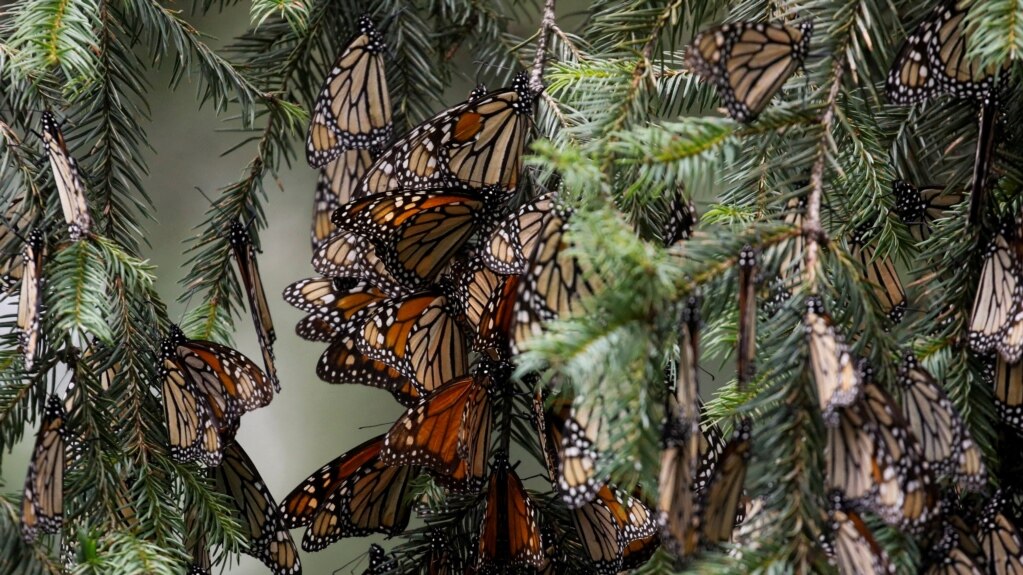The Monarch butterfly population has dropped to its second-lowest number on record in Mexican forests this winter. The forests are the insects’ winter home. The population decrease is worrisome as the butterfly group is already considered at risk of disappearance.
Mexico’s government and the non-profit World Wildlife Fund (WWF) recently issued findings of their yearly joint study on the butterflies. The research shows that the monarch butterfly presence has shrunk to less than a hectare of forest area.
In the mid-1990s, monarch butterflies could be found on around 18 hectares of the forest.
The findings represent an almost 60 percent decrease in the monarch butterfly population compared to last year’s study. It is also the second-lowest population finding since the first study took place more than thirty years ago.
Biologists blame the drop on higher-than-usual temperatures and dry conditions in the northwestern U.S. where the butterfly reproduces.
The weather conditions affect the growth of milkweed, the plant where the butterflies lay their eggs. When the young arrive, milkweed is their food for a time.
In one of the planet's famous wildlife migrations, the butterflies travel south as many as 4,500 kilometers from places as far north as Canada. They spend the winter in warmer Mexico, where millions of the insects stay in trees that protect them from the rain and cold.
Monarch butterfly populations change year to year. As recently as 2021, the same study showed a 35 percent increase to cover around 2.8 hectares.
Officials and activists called for more action to help the species. Such calls include the need to reduce threats posed by herbicides that destroy milkweed and the need to protect forests.
"We can't lower our guard," Jorge Rickards, head of WWF's Mexico office, told reporters after releasing the latest data.
I’m John Russell.

